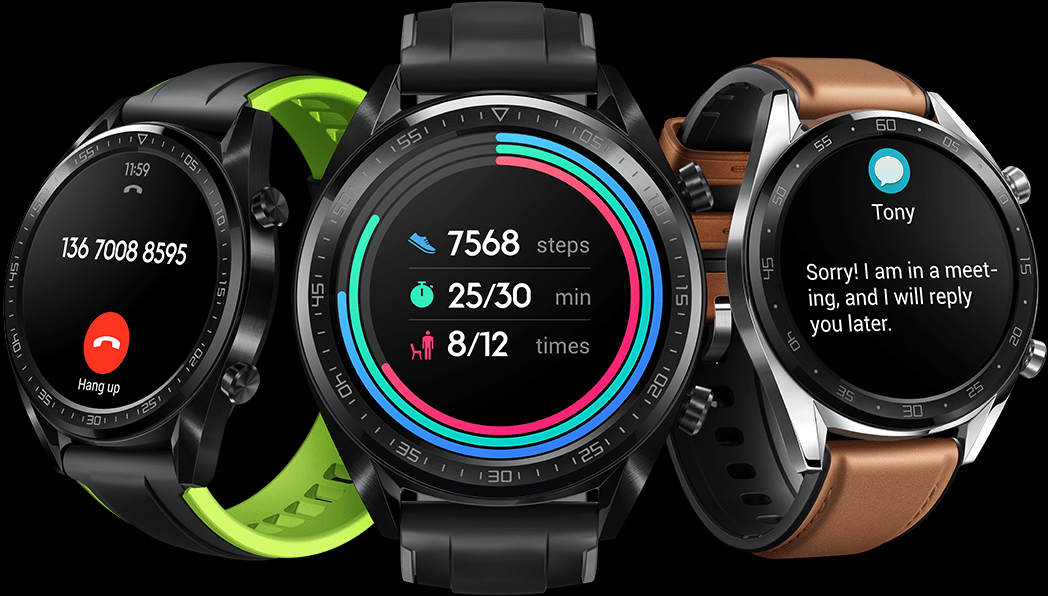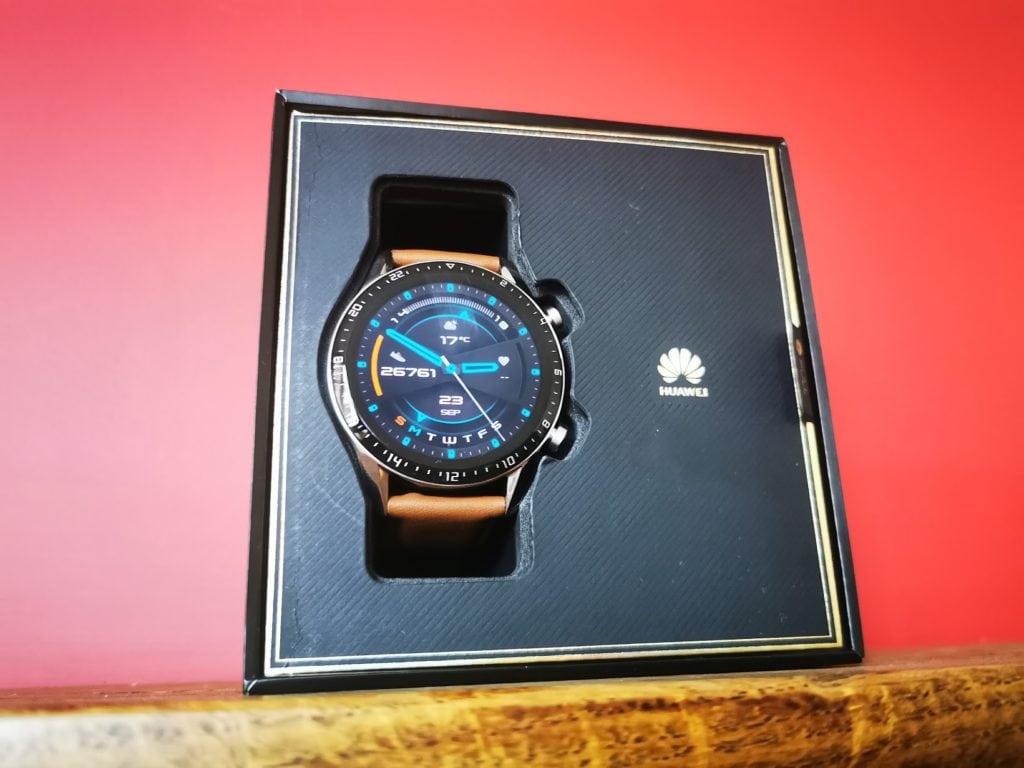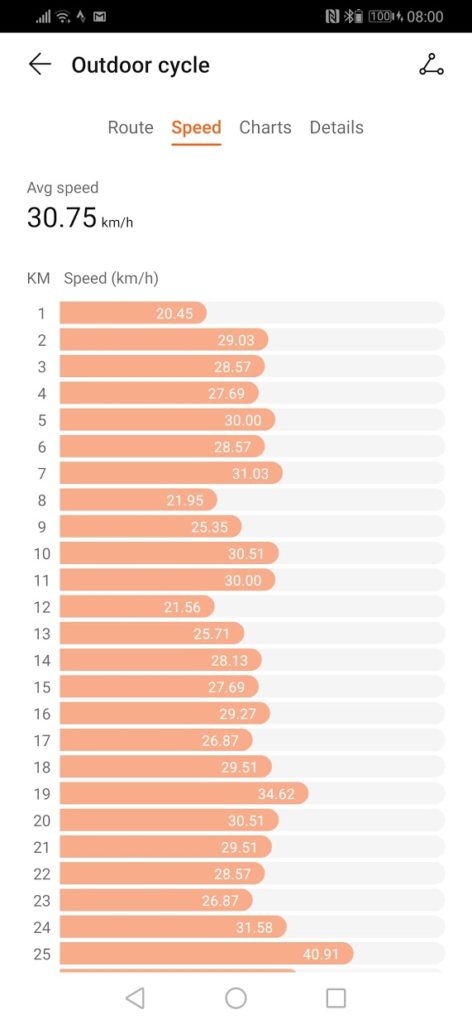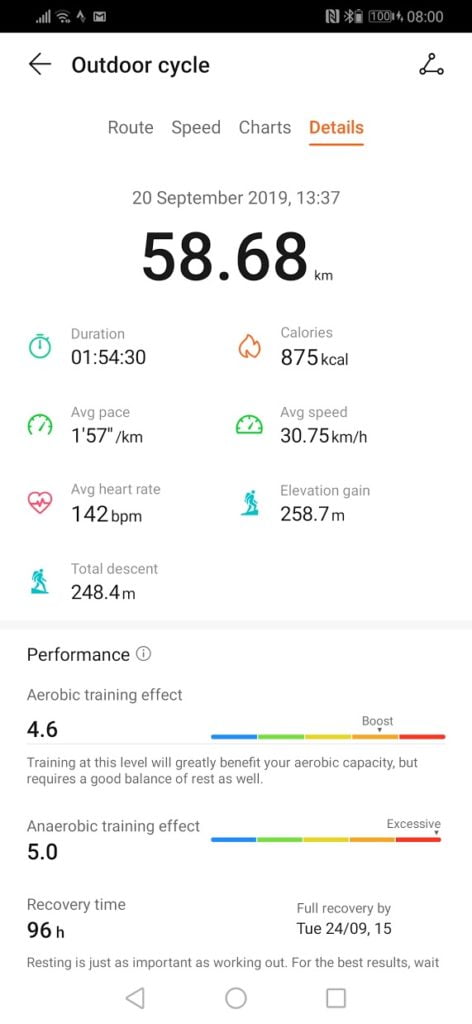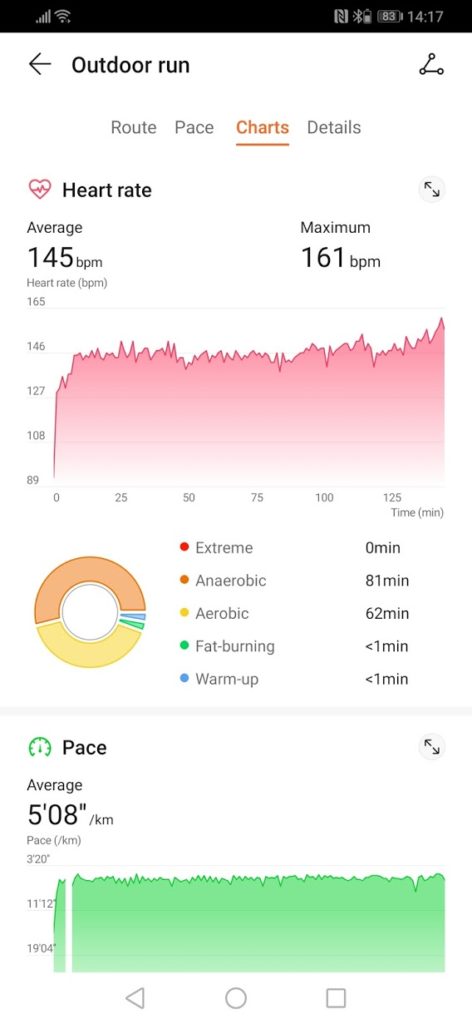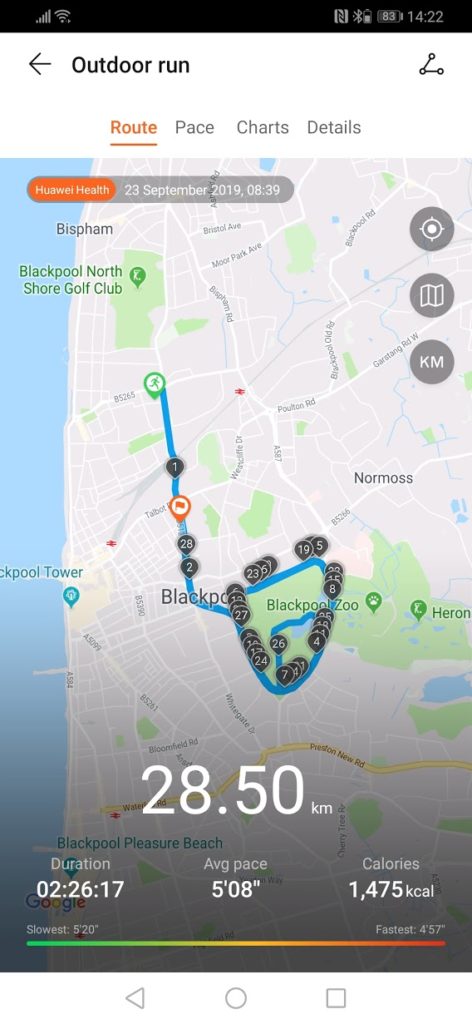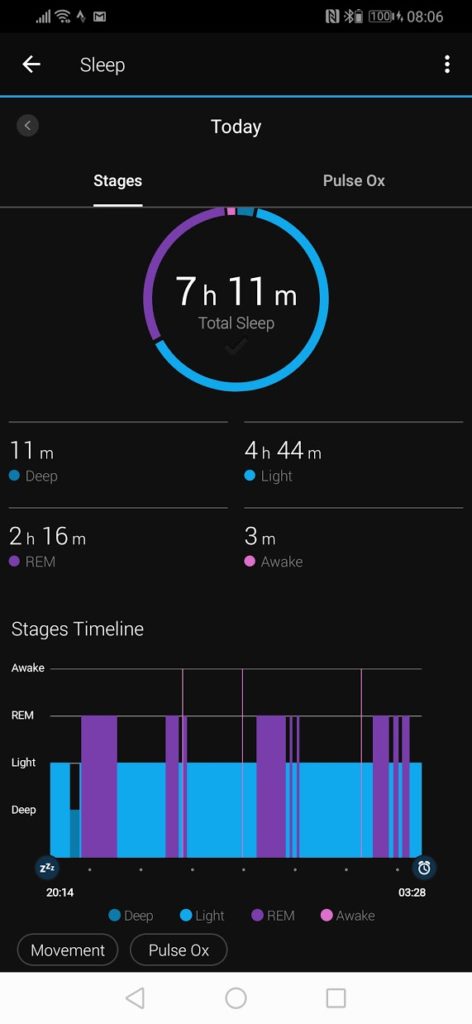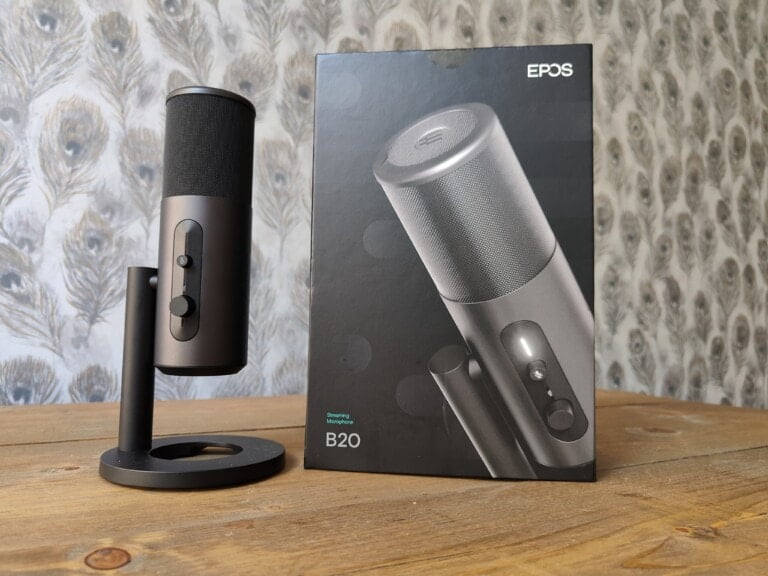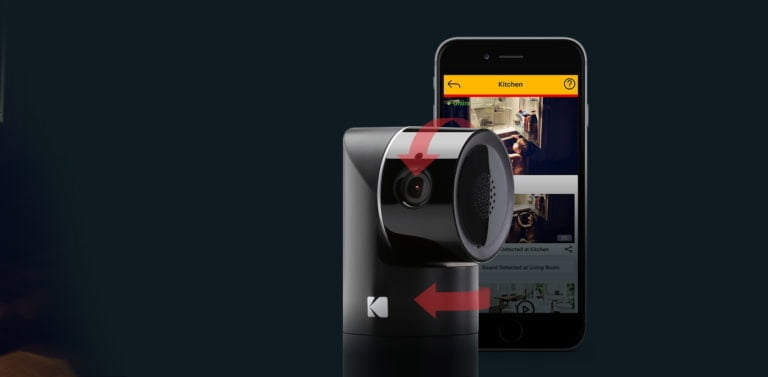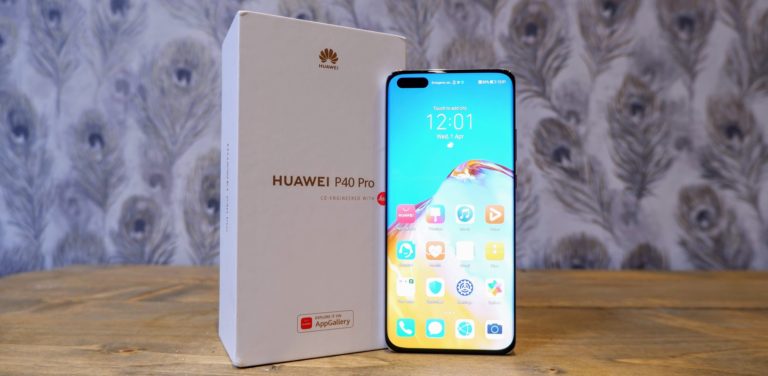Any links to online stores should be assumed to be affiliates. The company or PR agency provides all or most review samples. They have no control over my content, and I provide my honest opinion.
On Thursday, alongside the new Mate 30 series, Huawei introduced its latest smartwatch – the Watch GT2 powered by the latest Kirin A1 SoC which is also used in their new FreeBuds 3.
It comes in two sizes, 42mm and 46mm catering for different sized wrists and styles, though the 42mm is mainly targeted towards women.
While this is classed as a smartwatch, it uses the Lite OS developed by Huawei. This is what allows the watch to feature an exceptional 2-week battery life. The downside to this is that it is not really a smartwatch, but a feature watch. The watch does everything that it does out of the box and nothing else, functionality is limited to what Huawei decide to include.
I am currently reviewing the Garmin Fenix 6 Pro, so all my review comparisons will be done against this, that is a £600 watch, so not exactly like for like. However, if you want something a little closer in pricing the Garmin Venu is perhaps closest match for features at around £330 or the Garmin Vívoactive 4 at £280, both will offer similar performance to everything I have tested this against.
Specification
- Kirin A1 processor
- Display: 46mm: 1.39-inch OLED | 42mm: 1.2-inch OLED
- GPS and Bluetooth 5.1
- Waterpoof up to 50m – and can do swimming HRM
- 16MB (42mm) or 32MB of RAM (46mm) – Yes MB!
The 46mm model has a 1.39-inch OLED with 454 x 454 resolution, while the 42mm cuts things back slightly – it’s a 1.2-inch 390×390 display.
The watches feature either 16MB or 32MB of RAM, which is absolutely insane in a world of 12GB phones. This goes to show how lightweight the Lite OS is, and an indication of how they can achieve that 2-week battery life. Garmin doesn’t release their hardware specs, but I would love to see how they compare, I would guess even lower.
The Kirin A1 processor is what you will find in the new FreeBuds 3 so this thing must be tiny. It uses a proprietary connector which looks similar to the Apple Watch wireless charges, but it is not wireless and uses two small contact points.
You can now receive calls on the watch itself instead of just being able to answer and reject calls on your phone and there are integrated speaker and microphone. While you get all the notifications you could want, there is no ability to send replies.
The smartwatch landscape
To be frank, it is a shambles. There are multiple issues with the wearable market. You generally have to make a choice between features and battery life. The Apple Watch is undeniable the best actual smartwatch, but you get around a day of battery.
WearOS is a bit of a joke, which is a shame. The issue is with Qualcomm dragging their feet with developing new chipsets, and Google apparently not caring about the system. This, therefore, leaves companies like Fossil doing their best to produce great watches, but still limited to the weaknesses of inefficient chipsets.
You then have FitbitOS which is a smartwatch, developed from the Pebble OS, but lack of developer support limits its smartwatch ability.
Garmin is another step down in smartwatch creds, they don’t even bother to class themselves as a smartwatch though. With these, you have Garmin Connect IQ apps, which generally don’t do a great deal. It is more about adding more data fields and watch faces.
Then you have Lite OS of Huawei, which lacks any flexibility at all. If it does what you want, then that’s great, the lightweight nature of this OS is what gives it class-leading battery life able to outperform similarly priced Garmin watches and embarrass any other fully fledged smartwatch.
Price Comparison
The Watch GT 2 is priced at €249 (roughly £220/$275) for the 46mm model and €229 (£200/$250 ) for the 42mm version. Availability should be sometime in October.
Comparing to the Garmin Venu (£330) and Vívoactive 4 (£280) it is considerably cheaper.
The Fitbit Versa 2 comes in a £200, this is technically a smartwatch using FitbitOS, with actual apps, but there is poor development support so much less flexibility than WearOS or the Apple Watch. The Fitbit also lacks GPS, which is a deal-breaker for me wanting serious fitness tracking.
Ticwatch S2 (£160) and Fossil Gen 5 (£279.00) use WearOS so have far more functionality thanks to proper apps, but generally one-day battery life. The Fossil is the better choice thanks to the Snapdragon Wear 3100 and battery mode options which should allow you to squeeze more than a day worth of use.
If you are an iPhone user, then the Apple Watch is going to be hard to say no too, though it has the same issue as WearOS so you will be lucky to get more than a day of usage. Apple has really upped the ante this year, not so much with the launch of the 5th generation but the reduction in the price of the 3rd generation down to just £199. For many companies this will eliminate any advantage they have apart from the battery life (for iOS users).
I think one of the main selling points of this watch is its looks. The obvious competitors just don’t look anywhere near as good in my opinion.

Watch GT2 
Garmin Venu 
Fitbit Vera 
Apple Watch
First Beat
Like most sports watches, Huawei licence several Firstbeat features. Firstbeat is the leading company in body analytics. Basically they have spent 15+ years researching heart rate variability and other data that consumer sensors can provide and working out how that correlates to important physiological factors.
In this case, you get 8 features which include:
- Calories Burned – Accurate calorie counts for daily life, top performance, and everything in between.
- VO2max Fitness Level – Your true fitness level and key to personalized training guidance.
- Training Load – Keep track of the physiological impact of all your training activities over time.
- Training Status – A groundbreaking approach to training effectiveness evaluation.
- Training Effect: Aerobic – Reveal the physiological impact of your activities to find the perfect training for you.
- Training Effect: Anaerobic – Unlock the secrets of top-performance in activities with high-intensity demands.
- Recovery Time Advisor – Ensure adequate recovery to reap the full reward of your efforts.
- Personalized Training Plans: Running – Reach your running goals with expert guidance specifically designed for you.
The number of First Beat features actually puts this ahead of the Garmin Venu and vívoactive 4/4S, as well as the Suunto 5. It is only when you get to the £250 Forerunner 245 / 245M do you get 11 First Beat features. Apple doesn’t licence any of this data, and the only WearOS product using 6 of the features is the £845 Montblanc Summit 2.
Performance
Day to day
The day to day performance of this watch is excellent, it does everything I want from a smartwatch. Specifically that is just getting notifications and being able to read messages. Some people may want the ability reply to messages, and from what I can tell, this can’t do that. Garmin has the option to send canned responses, I have never used it, but I suppose it would be better to have and not use, rather than no option for it at all.
You can take phones calls on the watch, and set up easy access to a regular contact. The watch has a microphone and speaker built-in. I am not sure how much use this would get, but if your headphones are paired up at the time it would feel less stupid taking or making a call. In reality I am more likely to use the watch to reject any calls that come in.
The 1.39-inch AMOLED display with a resolution of 454 x 454 puts my Garmin to shame, and the whole UI is far smoother than the Garmin experience. Everything runs far faster, and I have found the touch interface accurate and a pleasure to use. This apparently has an option for always-on display, I just have screen on times going up to 20 mins. This is possibly user error, or likely requires a software update. It will significantly reduce battery life though, if similar to the Garmin Venu, you should still get several days usage from it though.
You get all the usual all-day fitness tracking features, and I have found these to be quite accurate. Step counting is normally 1-2K below my Garmin, but that is probably attributed to the fact I wear my Garmin on my dominant wrist.
Similar to Apple and Google Fit, you get various rings to fill up, one is steps, the other activity minutes and the last total hours active. It is a useful way to motivate people to keep moving, I don’t normally stress about filling all the rings (I haven’t failed yet), I know my girlfriend obsessively tries to fill hers on her Apple Watch, so clearly this has some positive effect on users.
One thing I have noticed is that with calories, it only reports the activity calories, they leave it up to you to know your basal metabolic rate. This is the calories you need just to maintain your bodies functions without losing weight, before any movement. At 37, 186lbs/84kg and 6ft1/185cm mine is around 2000 calories, and the apps indicated I burn about 1k calories a day, so 3K. I would say this is a little low, but calories estimations are generally very inaccurate, depending on what site I go on, the BMR calculation varies widely, worryingly diabetes.co.uk suggested I needed 3200, making my daily calories 4K plus. The fact that BMR calculations are inaccurate may be why Huawei decide to leave total calories off.
Fitness
This is where things go a little pear-shaped. I will get the bad bit out of the way first. There is no Strava or any form of data export other than Google Fit. This means the watch is dead on arrival for anyone keen on sports.
I have raised the question to the Huawei PR team, I am not confident it will help, as this issue has been well documented since the first GT watch.
The data export problem is annoying enough that users have tried to develop their own workaround solution. It is incredibly convoluted, and I am not sure I would want to do it for every activity, however if you have an important race you want to tack accurately and you only have this watch then the Huawei TCX Converter will help. I have tried to do this myself, and for me at least I am unable to backup the Huawei Health app that is required to access the TCX data.
HarmonyOS is designed for wearables, so I am hopeful that future iterations of this watch will sue that, and this problem will go away, even if a third party developer solves it.
Frustratingly, the watch is actually good aa a sports watch apart from the above issue. When you complete an activity you get a surprising amount of data to consume, easily comparable to Garmin.
It is too much data to comment on individually, but the screenshots for outdoors cycling shows show what is included.
Running
It will break down your heart rate into time within all the zones. Some of the zone classifications are a little off, it classes anaerobic as about 145BPM, and extreme is something like 165bpm. Usually, there wouldn’t be an extreme, and it would be anaerobic for that heart rate. It uses all this heart rate data to provide some recover advice and training effect using the First Beat features. This is one area I haven’t tested as much as I would like, I assume it will adapt more once it knows my baseline, at the moment it is suggesting I am doing too much of everything. With the occasional over-reporting of heart rate, this also throws the accuracy off a little too.
When outdoors it will use the barometer to provide altitude data, a nice feature that you won’t find on some more expensive fitness focussed watches like the Suunto 5.
Social & Competitive Features
While the data you get per activity is excellent, there is no social aspect to the health app at all nor is there any log of personal bests. There are badges, but that’s about it.
All the other fitness platforms that I am aware of include social and comparative aspects. One of the reasons Fitbit did so well was the huge number of users and the step count leaderboards. Garmin has challenges, and both Garmin and Strava keep accurate logs of all historical data and track all your personal best. Strava even has segments and KOMs which has been fundamental to its success.
GPS
The watch integrates a chip with three positioning satellites, similar to Garmin, I will assume this is an in house chip rather than the Sony used in the Fenix, but you get GPS, GLONASS, GALILEO.
Due to the lack of data export, it is difficult to do an accurate comparison of GPS accuracy. My best chance will be for the Chester Marathon in two weeks where both watches should match up.
Currently, I have a bike ride which Huawei reported as 36.46m/58.68km and Garmin as 36.55mi/58.82km, not a huge difference but this could have meant Strava correctly identifying my marathon as a marathon for my personal bests or just ignoring that distance. Obviously this issue is redundant as there is no Strava.
Wrist Based Heart Rate Tracking
While I think this watch is good for fitness tracking, it suffers from the same issue as every other wrist-based HRM on the market. There are often serious issues with it locking on to my heart rate, dropouts or spikes.
This issue can be minimised by optimising placement and tightness of the watch. Wearing it above the wrist bone will help. I have slim boney and hairy arms, so I find I am a particularly bad test subject for any wrist HRM. With this watch I found the best accuracy to wear it the normal way around, but a little higher up, and tighten the strap as much as possible. I have used the brown fake leather strap, I think the black UPVC strap may offer better accuracy due to a little more flex.
During my initial tests, this has the opposite problem to Garmin, it sometimes reads my heart rate as exceptionally high, typically 170bpm+. Garmin, on the other hand, will read at 70-90bpm even when I am going full throttle. Both watches appear to take the same amount of time locking on, this is quite often between 10-15 mins. Not ideal if you have a 30 mins session.
Bike Ride – inaccurate

A bike ride had no chance of being accurate 142bpm avg 
Fenix 6 131bpm Avg 
Edge 520 with chest HRM
An accurate gym session
Mostly Accurate outdoor run
When it does lock on, it is relatively accurate, as I can’t export the data I can’t overlay the Garmin data with the Huawei data, but it is generally accurate enough.
Typically, exercise accuracy is also dependant on what exercise it is you are doing. Cycling or anything with your hand holding stuff results in reduced accuracy (for every brand). Running vigorously has some issues, a gentle jog or walk the least issues.
On the flip side, I have found it more accurate than the Fenix 6 Pro on occasion. My last session in the gym it locked on quickly and on suffered from one noticeable peak whereas the Garmin was jumping up and down until the 25m mark.
This watch will do heart rate tracking for swimming, a feature that Garmin has only just rolled out to some watches. I have not tested it, because I haven’t been swimming in about 15 years, I would expect the same inaccuracy issues though.
It would be great if a future version of this watch had the option to pair up with a Bluetooth HRM, but this is perhaps asking a little much for a watch that isn’t specifically a sports watch.
All-day tracking appears to be good, it classes my resting heart rate quite high, but this seems to be their interpretation of resting heart rate. It shows the low heart rate which is ordinarily 40bpm but then says my resting HR is around 57bpm
Stress
To enable stress tracking, you must calibrate the watch with a base reading first, you then have the option to either manually do them in the future or enable all-day tracking.
Garmin has me as low stress, this has me at medium. So each watch is interpreting things differently.
Sleeping
Unexpectedly, so far, I have found this to be the most accurate sleep tracker to date. My test data is limited to 4 nights sleep, so things could still go downhill.
I don’t know how Huawei manages to do a decent job, while Garmin and its fancy heart rate monitor with pulse oximeter can’t be accurate.
There are several aspects I have found that this is superior to Garmin. Firstly, timing, in all the days I have used it, it has managed to accurate say when I go to bed and when I get up. Garmin on the other hand frequently says I am asleep by around 6 pm just because I am not moving around.
As I have been trying to catch up with sleep, I have had multiple naps in the past few days, the Huawei accurately identified each nap.
Even the phases of sleep appear to be more accurate. I sleep badly, Garmin typically has me at no deep sleep or just a few minutes per night. The Withings Sleep Mat says I sleep well, with enough deep sleep. The Huawei shows that I get more like 1 hour of deep sleep, but my deep sleep continuity is poor, which means I don’t have big chunks of it, but lots of little ones. While I can’t objectively say which one is the most accurate, I would subjectively say that the Huawei is the best representation of my sleep, accurately identifying what I think are my sleep problems (extremely light sleeper and wake up multiple times per night).
One thing worth noting, it seems to state my sleep time as 8 pm every night, which is probably not far off (I am weird), but I doubt I fall asleep precisely at 8 pm every night. When I came home from Munich is set my sleep time to 1:30 AM, so it is getting the times roughly right, I suspect it is rounding things up.
Music
Both sizes come with 4GB of storage, however, unlike Garmin and to a lesser extent Fitbit, there is no Spotify integration. Garmin will download playlists for offline playing allowing you to run without your phone.
While it is nice to have the option for music storage, I have long quit buying MP3s, and all my music is via Spotify, and I think this is a common scenario. So the storage is pretty much useless for me.
One saving grace, and to some extent, this makes it better than Garmin, is that you can switch your music control to the phone. While it doesn’t have direct Spotify control, you can stop, play, and pause your music. I have had some issues with Spotify randomly stopping/pausing recently, and this is a nightmare if I am wearing a running vest with my phone in it. With the watch, this is mostly not a problem. Due to the touch screen, things are not ideal mid activity if you are very sweaty. I still found it usable, but sometimes it took a couple of attempts.
Battery
So the big selling point is the battery, I haven’t had it for two weeks so can’t comment on how accurate that is. If you are put off by the one-day battery life of iOS and WearOS, you have no such problems here. The first day I got it (Thursday around 5 PM), it was 64% out of the box, I charged it on Saturday morning at 20%, during this time there was a lot more than your typical usage, as with any new gadget. I played around with the interface a lot testing various things. I also used the GPS to track a walk for 1 hour, then another 2-hour bike ride. With regular GPS usage I would expect I could get 5+ days out of this.
When I charged the watch to full, the following 48 hours saw a 10% decline per day with a bit over 1 hour of gym activity tracking in the gym, so no GPS.
The watch is rated for 30 hours of GPS usage which is almost as much as the Fenix 6 Pro and Forerunner 945, both of which have 36-hours. The Garmin Venu and Vivoactive 4 don’t state GPS tracking properly, but it will be less than 30 hours.
Overall
This watch has enormous potential, and for some people, it will offer all the features you need, and for those people I thoroughly recommend it.
The highlights include it being one of the most beautiful looking smartwatches on the market, class-leading battery life, quick and responsive interface that is well designed and very easy to use. Superb notifications and excellent sync speeds with your phone.
If you want a fashion watch, but with some smart creds without the hassle of charging all the time, then this could be the perfect watch.
But, thanks to its limited OS, if it is missing anything important to you, then tough luck. This will likely be a deal-breaker for many people. Specifically anyone semi-serious into fitness wanting to export their data to other platforms, for a watch with so much focus on fitness, this is a massive mistake on Huawei’s behalf, it is just hard to recommend this as a viable option for anyone that loves running or cycling.
I am optimistic about the future, though. Huawei tends to be good at updating their products, and I can’t see them leaving money on the table over such a small feature. I am also hopeful that future iterations of this watch will be switched over to HarmonOS which should have much more flexibility as it will be a fully-featured OS.
The Huawei Watch GT2 should be available in October, and I will post links to the order pages when available.
Huawei Watch GT 2 Score
Summary
The above score is a generic average 7/10 due to my conflicting feelings about this watch. I love the design and hardware, I can’t think of any other watch that looks as good as this. What it does do it does very well, but the lack of essential features makes it a none starter for a large number of users.
Pros
Cons
Overall
70%-
Overall - 70%70%
I am James, a UK-based tech enthusiast and the Editor and Owner of Mighty Gadget, which I’ve proudly run since 2007. Passionate about all things technology, my expertise spans from computers and networking to mobile, wearables, and smart home devices.
As a fitness fanatic who loves running and cycling, I also have a keen interest in fitness-related technology, and I take every opportunity to cover this niche on my blog. My diverse interests allow me to bring a unique perspective to tech blogging, merging lifestyle, fitness, and the latest tech trends.
In my academic pursuits, I earned a BSc in Information Systems Design from UCLAN, before advancing my learning with a Master’s Degree in Computing. This advanced study also included Cisco CCNA accreditation, further demonstrating my commitment to understanding and staying ahead of the technology curve.
I’m proud to share that Vuelio has consistently ranked Mighty Gadget as one of the top technology blogs in the UK. With my dedication to technology and drive to share my insights, I aim to continue providing my readers with engaging and informative content.

